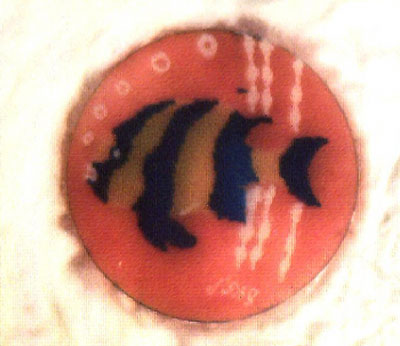| Posted: April 9, 2007 |
Nanotechnology art as anti-counterfeiting technology |
|
(Nanowerk News) Nanotechnology meet art meet anti-counterfeiting technology. Imagine an art gallery full of art that nobody can see not even the artists who created it. Paintings, drawings, and sculptures so small that it is impossible to view with the naked eye. It s called Nanoart and it is lending more proof that beauty really is in the eye of the beholder.
|
 |
Fish is the first of several works and commissions to be created in 2007. (Image: J Sha)
|
|
Artist J Sha teamed with ARmark Authentication Technologies, LLC in Pennsylvania, to unveil what is believed to be the world s smallest piece of flat artwork. Fish is the first of several works and commissions to be created in 2007. At a mere 40 microns tall with features as small as 250 nanometers, Fish is smaller than a spec of dust and 1/8th the width of a strand of hair.
|
|
Fish was created using nanoentonography, a new process developed by the artist for ARmark to safeguard products and brands from counterfeiting. The ARmark authentication system works by incorporating microscopic layers of covert markers to create brand-owner specific information into products. There are up to eight different levels of security that can be applied to these covert markers that are mere microns wide. With infinite possibilities for unique coding (shapes, colors, numbers and patterns) the product is impossible to replicate.
|
|
ARmark Authentication Technologies, LLC is a wholly owned subsidiary of Adhesives Research in Glen Rock, Pa., develops custom authentication systems for use across a wide variety of brand-owner applications. ARmark's covert markers aid in brand protection, product surety and risk mitigation to fight global counterfeiting and can be combined with custom-developed delivery systems for application to a variety of goods, including pharmaceuticals, packaging, electronics, food, apparel, currency, bonds and documents.
|

